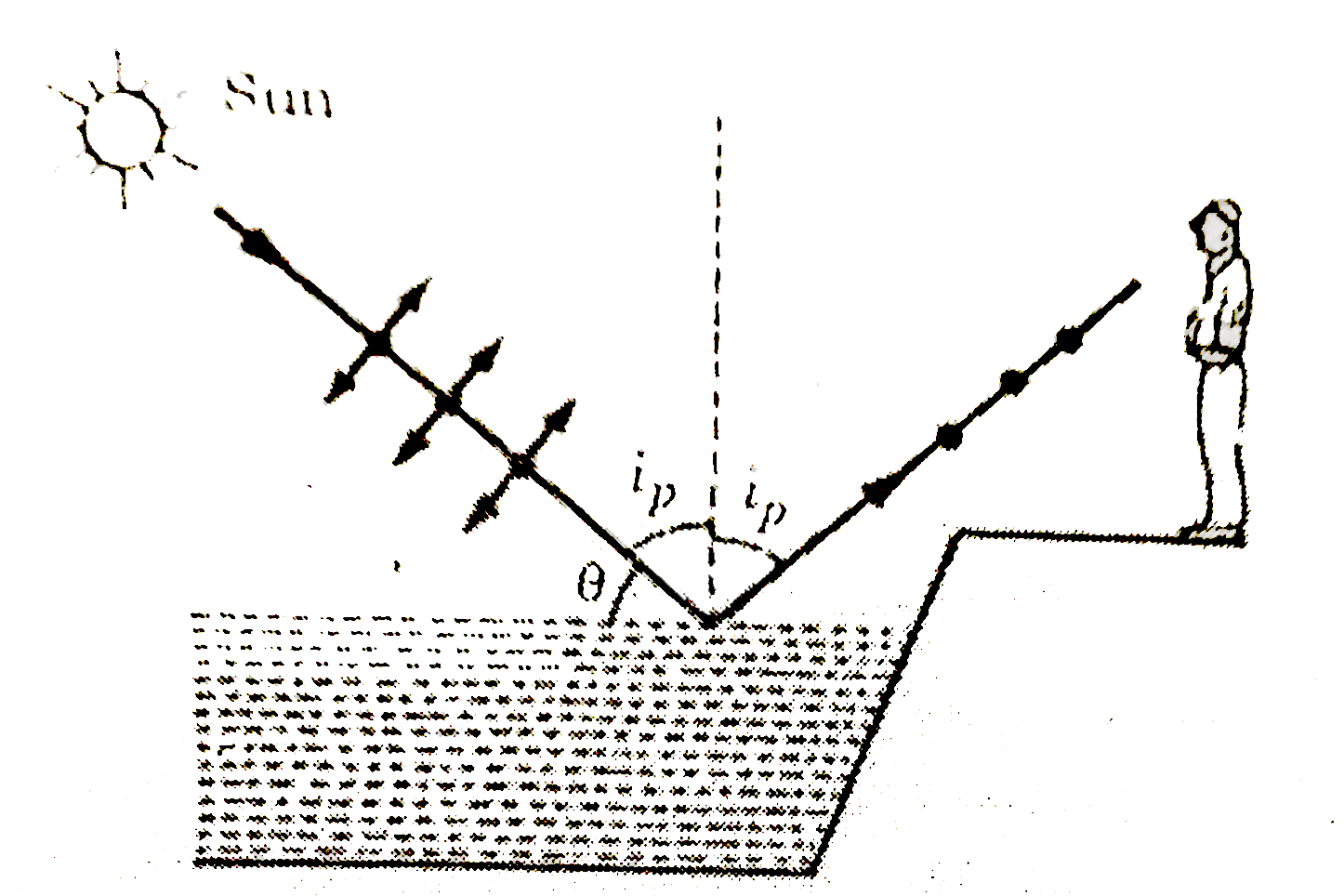At what angle θ above the horizon should the sun be situated so that its light reflected from the surface of still water in a pond is completely polarised. Take μ=1.327andtan53∘=1.327.
The reflected light will be completely polarised, when I=iP, so that θ=(90−iP)
As μ=taniP
1.327=taniP:iP=tan−1(1.327)=53∘
∴Θ=90∘−iP=90∘−53∘
=37∘
Topper's Solved these Questions
- BOOK - PRADEEPCHAPTER - OPTICSEXERCISE - Very short answer question5videos
OPTICS
- BOOK - PRADEEPCHAPTER - OPTICSEXERCISE - very short answer questions1videos
OPTICS
- BOOK - PRADEEPCHAPTER - MAGNETIC EFFECT OF CURRENT AND MAGNETISMEXERCISE - Competition Focus (Multiple Choice Questions)2videos
MAGNETIC EFFECT OF CURRENT AND MAGNETISM
Similar Questions
In Fig. 16.13, at what angle θ above the horizon should the sun be situated so that its light reflected from the surface of still water of the pond be totally polarised? Given: refractive index of water μ=1.327 and tan53∘=1.327.
 View Solution
View SolutionA pole light is situated near a still water pond. Calculate the angle subtended by the pole light to the pond surface such that light reflected from the water surface is completely polarised. Use μ=1.23.
View Solution
Knowledge Check
- Question 1 - Select One
The light reflected from water surface (μ=1.3) is completely polarised. The angle of incidence will be
A30∘B45∘C53∘D65∘ - Question 2 - Select One
At what angle of incidence will the light reflected from glass(μ=1.5) be completely polarized
A72.8∘B51.6∘C40.3∘D56.3∘ - Question 3 - Select One
At what angle should an unpolarised beam of light he incident on a medium of refractive index √3 so that the reflected beam is completely polarised ?
A0∘B30∘C45∘D60∘
At what value of the angle of incident θ1 is a shaft of light reflected from the surface of water perpendicular to the refracted shaft?
View SolutionAt what angle of incidence will the light reflected from water (μ=1.3) be completely polarised?
View SolutionLight reflected from the surface of glass plate of refractive index 1.57 is linearly polarised. Calculate the angle of refraction in glass.
View SolutionResorting to the Fresnel equations, demonstrate that light reflected from the surface of dielectric will be totally polarized if the angle of incidence θ1 satisfies the condition tanθ1=n, where n is the refractive index of the dielectric. What is in this case the angle between the reflected and refracted rays?
View SolutionWhat is the angle which the rays of the sun must make with the surface of water (n=1.33) in a lake, so that the reflected rays are completely polarised in a plane parallel to the surface ?
View Solution

